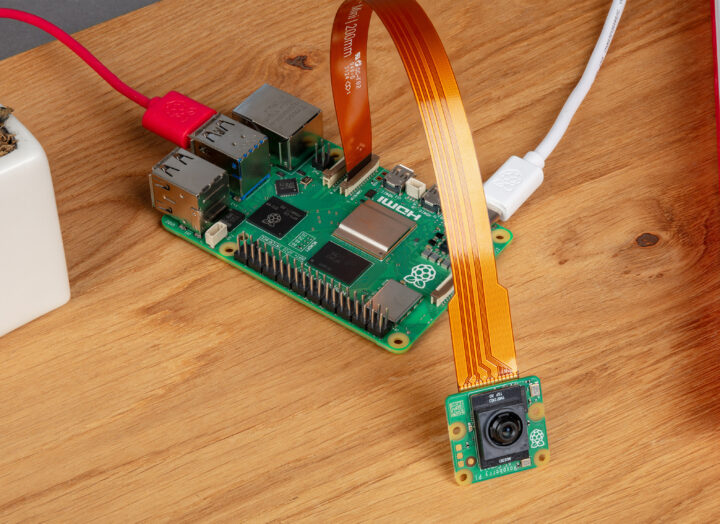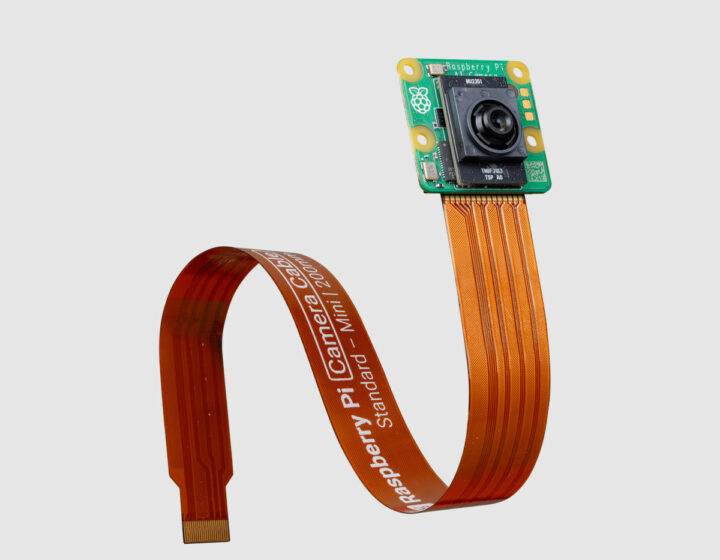We previously noted that Raspberry Pi showcased a Raspberry Pi Zero 2W with a Raspberry Pi AI camera based on a Sony IMX500 intelligent vision sensor at Embedded World 2024, but it was not available at the time. The good news is that the Raspberry Pi AI camera is now available for $70 from your favorite distributor.
This follows the launch of the more powerful Raspberry Pi AI Kit designed for the Raspberry Pi 5 with a 13 TOPS Hailo-8L NPU connected through PCIe. The AI camera based on a Sony IMX500 AI camera sensor assisted by a Raspberry Pi RP2040 to handle neural network and firmware management is less powerful, but can still perform many of the same tasks including object detection and body segmentation, and works on any Raspberry Pi board with a MIPI CSI connector, while the AI Kit only works on the latest Pi 5 board.
Raspberry Pi AI Camera specifications:
- 12 MP Sony IMX500 Intelligent Vision Sensor
- Sensor modes: 4056×3040 at 10fps, 2028×1520 at 30fps
- 1.55 µm × 1.55 µm cell size
- 78-degree field of view with manually adjustable focus
- Integrated Raspberry Pi RP2040 for neural network and firmware management
- 16MB flash device to cache recent models
- 20cm flat cable
Under the hood, the Raspberry Pi RP2040 is just used to transfer firmware and neural models to the Sony sensor that does the heavy lifting with a Bayer image sensor, similar to the one used on the Raspberry Pi Camera Module 3, that feeds the image to an integrated Image Signal Processor (ISP) for basic processing steps, before it being sent to the AI accelerator on the camera. The output is then transferred to the Raspberry Pi along with the image data over the CSI-2 camera bus.
On the software side, the camera is compatible with the official Raspberry Pi camera frameworks, namely Picamera2 and rpicam-apps. The video embedded below shows MobileNet SSD object detection neural network model running under rpicam-apps at about 30 FPS at 1920×1080 resolution. The demo was done on a Raspberry Pi 4, but we’re told the inferencing performance would be the same on a low-end Raspberry Pi Zero.
Check out the documentation to reproduce the demo by yourself. Advanced users may be interested in checking out Sony’s AITRIOS Developer site with more technical details about the IMX500 sensor and tools such as the IMX500 Converter and IMX500 Package which will be useful to run custom-trained networks on the AI Camera using frameworks like TensorFlow or PyTorch.
If you own a Raspberry Pi 5, you’ll have to decide whether to use the AI Kit or AI camera with both selling for $70. The kit is more powerful, but if you don’t already own a Raspberry Pi camera, the camera will be cheaper. The camera can also be useful if you are using the PCIe interface for an NVMe SSD or other PCIe device and don’t want to add another HAT with a PCIe switch like the HatBRICK! Commander. For all other Raspberry Pi models, the AI camera is the way to go.
I should get a sample of the Raspberry Pi AI camera soon, but I’ll only be able to review it in November since I’m still on holiday. More details may be found in the announcement and the product page.

Jean-Luc started CNX Software in 2010 as a part-time endeavor, before quitting his job as a software engineering manager, and starting to write daily news, and reviews full time later in 2011.
Support CNX Software! Donate via cryptocurrencies, become a Patron on Patreon, or purchase goods on Amazon or Aliexpress






